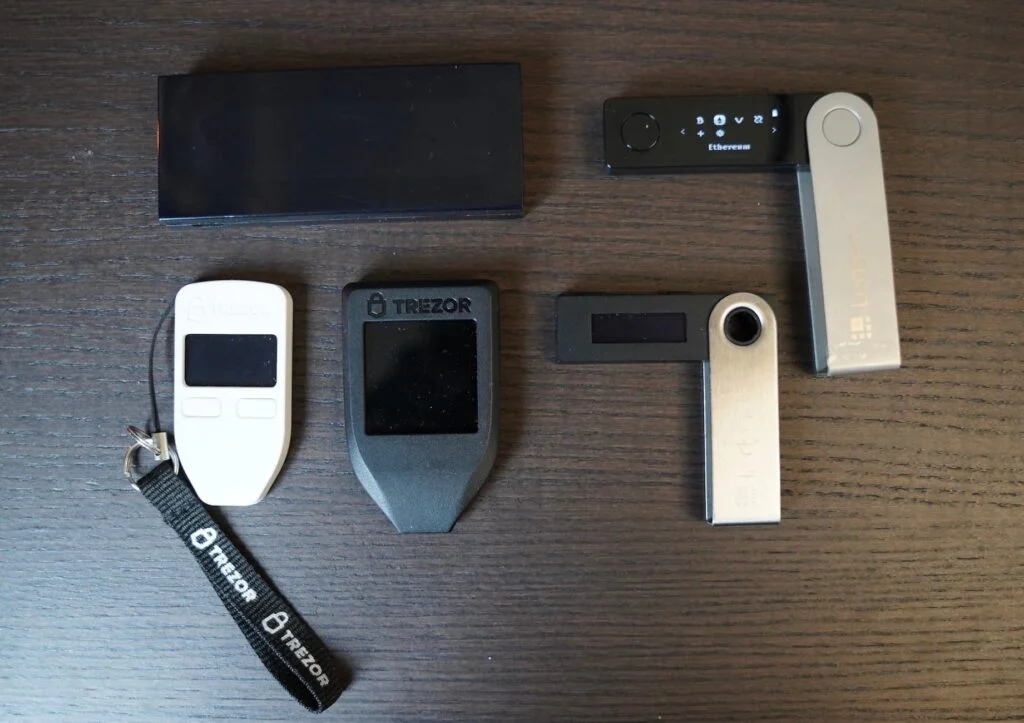In this article we give you the top 10 best ways to keep your cryptocurrencies safe.
Cryptocurrency and Bitcoin is an exciting emerging field bringing new ways of understanding technology and value. The rewards from investing in cryptocurrencies can also be huge. Therefore, hackers and thieves are constantly stepping up their game. And when theft from a remote location is possible and tracking hackers are almost impossible, it is very easy to lose everything. Therefore, you have to always take vigilance in your hands.
1. Understanding ownership of cryptocurrencies
Ownership of cryptocurrencies is via holding a Private Key. Anyone with this Private Key is able to withdraw your cryptocurrencies, similar to someone knowing your PIN code for your bank account.
With banks, if someone makes an unauthorised withdrawal from your bank account, you always can request your bank to reverse the transaction. This is not possible with cryptocurrency transactions which cannot cannot be cancelled or reversed.
This makes it all the more important to keep your Private Key to yourself.
Notably, many cryptocurrency holders store their cryptoassets on exchanges for trading. Some may also use online wallets for convenient storage and use. In these cases, the exchanges and wallets hold the Private Keys to your cryptocurrencies. Therefore, storing cryptocurrencies on exchanges and online wallets is essentially putting the security of your assets in the hands of third parties. Clearly, this is not something you would want to do.
2. Be wary of phishing scams
Phishing is malicious activity that involves deceptive emails or websites to solicit a user’s personal details. For example a phishing email disguised as a cryptocurrency exchange can direct you to a fake website and ask you to enter your login and password information.
One way to protect yourself is obviously be wary of any emails asking for your login information or requesting you to login onto their website. Especially if you have not done anything that may trigger this e.g. requested to reset your password.
As a good practice, you should also always check website security certificates on your email and any cryptocurrency exchanges you visit. But do note this is not 100% accurate.
3. Protect Your PC or phone against malware
Hackers can find ways to access your desktop wallet remotely using specialized malware. Therefore, always make sure your trading computer does not have any unknown programs.
Antivirus programs can add an extra layer of protection.
Some people may have phones or computers which they only use for trading or transacting with cryptocurrencies.
4. Avoid using public Wi-Fi networks
An additional measure to protect your computer is to avoid public Wi-Fi networks and especially accessing your cryptocurrency wallets or trading in public. These can be an avenue for foreign infiltration and theft of your cryptocurrencies.
5. Use a hardware wallet

Hardware wallets are external offline devices you can use to store your private keys and thus your cryptocurrencies. As they are offline, your cryptocurrencies will be protected against malware or viruses.
They do cost money but it is worthwhile for the sake of the security of your cryptoassets.
Examples of hardware wallets include the Ledger Nano X and the Trezor Model T. You can check out our Ledger Nano X review, or our Trezor Model T review for more information.
6. Use a paper wallet (for those who are extra careful)
Paper wallets are simply a piece of paper with your private and public keys printed on it. This paper wallet is kept in a safe location. For example, some people may store it in security deposit boxes or in a secure location at home.
This is the safest way of keeping your cryptocurrencies safe, despite being the most rudimentary.
7. Enable two-factor authentication (2FA)
Two-factor authentication is when you enter 2 separate passwords to log in or to approve any withdrawals. The preferred methods are either by SMS or using Google Authenticator.
SMS authentication is where in addition to entering your username and password, you also request an SMS be sent to you with a unique code to log in.
However this method has been known to be vulnerable to SIM swap attacks. This is where hackers impersonate you to your telephone service provider and request a new SIM card. Therefore the requests for a SMS code will be sent directly to them.
The preferred method for two-factor authentication is using Google Authenticator. This is where a unique string of 6 numbers are generated every 30 seconds. When logging in, you go to the Google Authenticator app and log in with the generated numbers before they expire.
Most cryptocurrency traders enable two-factor authentication for any cryptocurrency exchanges they use, their online wallets (if any) and their email. The latter is because many cryptocurrency exchanges will send you a confirmation email to approve any withdrawals.
8. If it’s too good to be true, it probably is
The most common method for scammers to entice people is to feed upon people’s greed. Many scammers have websites or “exclusive” chat groups promising unreasonably high returns. These groups may require you to pay a membership fee to participate or to give them some of your cryptocurrencies so they can invest on your behalf.
As mentioned earlier, cryptocurrency transactions are irreversible. So you are left with no recourse if you later change your mind. These scammers may also operate in different jurisdictions so you have very little chance of tracking or taking any legal action against them if their promises do not materialise.
9. Keeping your information private
Telling people how you store your cryptocurrencies or flaunting your wealth is the same as painting a target on your back. Whilst it is certainly wrong for hackers or scammers to steal from you, you do not want to expose yourself as a target.
As mentioned before hackers can operate remotely. Therefore, taking a photograph of your private keys, login information or hardware wallet recovery phrase is essentially the same as posting a photograph of your credit card details online.
Similarly, when setting up any cryptocurrency wallets or exchanges, or accessing or transacting with your cryptocurrencies, make sure you are in a safe location without any cameras around.
10. Test send is your friend
Cryptocurrency transactions are irreversible, so you need to be extra careful in making sure you are sending to the correct address. Here are 2 common pitfalls you will want to watch out for.
The first pitfall is sending your cryptocurrency to an incompatible wallet. For example, you cannot send Ethereum to a Bitcoin address. Another example is for some exchanges like Binance, they have recently switched from Omni to ERC-20 for their Tether (USDT) address. So even if you are sending the same currency i.e. USDT, you need to make sure the address type is the same.
The second pitfall is sending to the wrong address generally. Cryptocurrency addresses are long strings of digits which are case sensitive. So you should check every digit of the address before you press “send”.
For extra security, some people may also request the recipient to send a voice message dictating the first and last few digits of the wallet address. This is to avoid hackers who have taken over either party’s devices and sent out their own wallet address instead of the recipient’s.
Therefore to minimise losses, especially when sending large sums of cryptocurrencies, consider doing a test send with a small amount before sending the remainder of your coins.
Conclusion
Cryptocurrencies bring a shift in the way we hold and transact assets of substantial value. The power of being in full control of your digital assets undoubtedly comes with the duty to ensure their security. With cryptocurrencies, this duty falls squarely on the user. It may seem intimidating, but anyone can store, send and trade cryptocurrencies when armed with knowledge and exercise caution.
With our top 10 best ways to keep your cryptocurrencies safe, you can be sure to navigate this space with confidence.
Further reading
Now that we’ve looked at the top 10 ways to keep your cryptocurrencies safe, we move on to cryptocurrency exchangees. Cryptocurrency exchanges are an inevitable aspect of being involved in the cryptocurrency space when we want to exchange between different types of coins. So be sure to check out our ranking of the top best cryptocurrency exchanges of 2019 here.

Michael Gu
Michael Gu, Creator of Boxmining, stared in the Blockchain space as a Bitcoin miner in 2012. Something he immediately noticed was that accurate information is hard to come by in this space. He started Boxmining in 2017 mainly as a passion project, to educate people on digital assets and share his experiences. Being based in Asia, Michael also found a huge discrepancy between digital asset trends and knowledge gap in the West and China.
